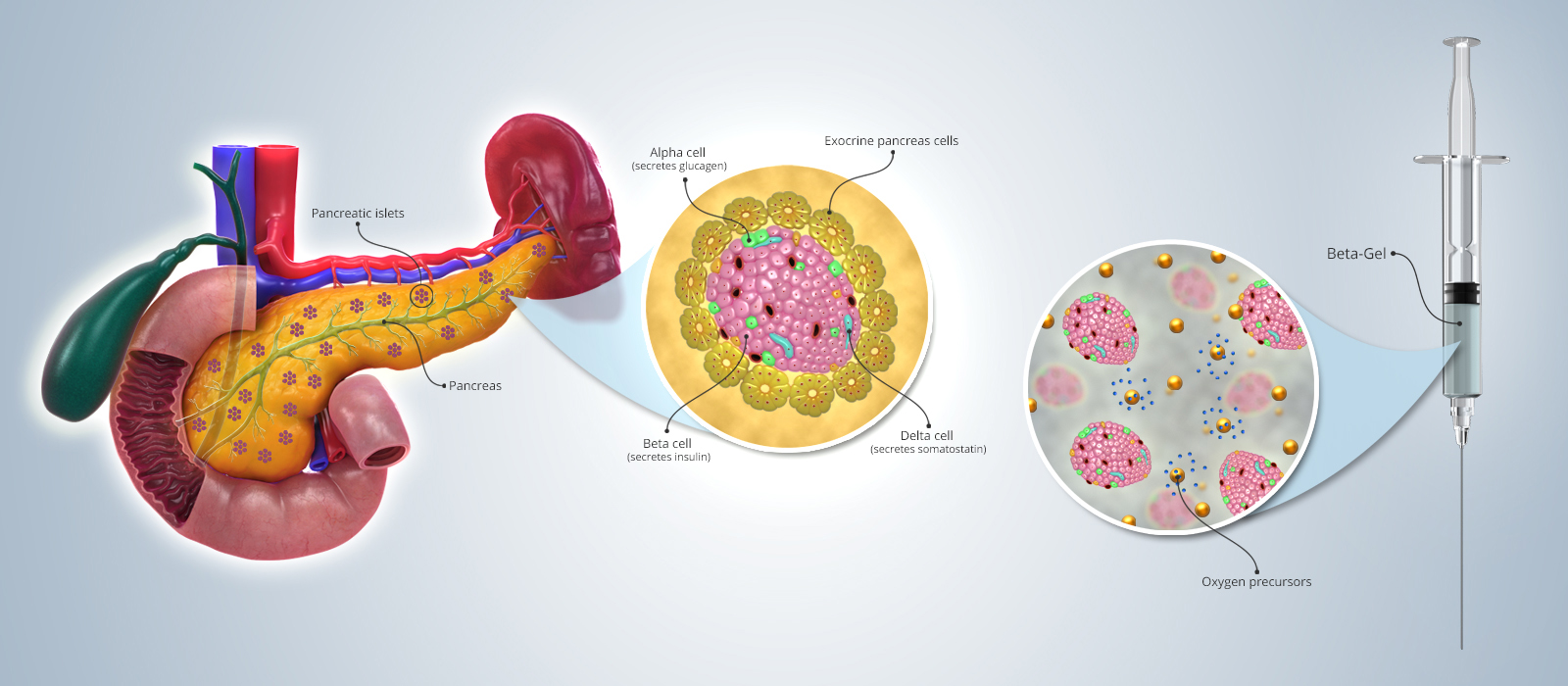The DRIVE technology in a nutshell
In order to improve pancreatic islet transplant therapy for diabetes mellitus DRIVE will develop a suite of functional biomaterials (β-Gel) for long term clinical efficacy of transplanted pancreatic islets. The project will also facilitate minimally invasive delivery of β-Gel inside a protective capsule (β-Shell) using a specialised delivery catheter (β-Cath).
DRIVE will deliver islets in a protected fashion to a body site outside the liver. The omentum is a layer of peritoneum surrounding abdominal organs that is highly vascularised and easily accessed surgically, resulting in a more favourable site for engraftment. The omentum also has the advantage of sharing the same blood supply and drainage characteristics of the pancreas, which should facilitate natural glucose sensing and insulin response for omentally-transplanted islets.
